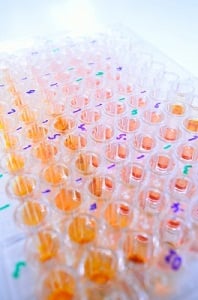Question:
How to use Protein Binding Assay to Detect Properties of Proteins?
The Protein Man Says:
 Aside from co-immunoprecipitation (co-IP), pull-down and electrophoretic mobility shift assays (EMSA), there are several more assays that can also be used to detect and analyze protein-protein interactions. This includes fluorescence polarization assays, overlay assays and protein complementation assays. Here's what you need to know about them.
Aside from co-immunoprecipitation (co-IP), pull-down and electrophoretic mobility shift assays (EMSA), there are several more assays that can also be used to detect and analyze protein-protein interactions. This includes fluorescence polarization assays, overlay assays and protein complementation assays. Here's what you need to know about them.
Fluorescencepolarization assays.This technique can be used to quantify protein-protein interactions in homogenous assay formats. To evaluate the strength of the protein-protein interaction, one of the reactants is labeled with a fluorophore (usually a variant of the green fluorescent protein or GFP). An increase in fluorescence polarization indicates the formation of a protein complex. When this happens, the equilibrium dissociation constant (Kd) of the complex can then be determined. Because these assays are homogenous, they offer a unique "mix and measure" protocol – no immobilization or separation step required. They are also highly sensitivity, easy to use and offer various readout modes.
Overlay assays.This technique is based on the specific binding of ligands with your protein of interest. By using this approach, you can accurately analyze the interactions between soluble and insoluble proteins since one of them would be appropriatelylabeled and immobilized on a membrane matrix. Bands orspots will appear on the membrane to indicate the location where the protein has bound with your protein of interest.
Protein complementation assays (PCA).This assay is best used in analyzing protein-protein interactions in living cells. In this technique, the proteins of interest (known as the "bait" and the "prey") are linked to incomplete fragments of a third protein which acts as a "reporter" protein. When the two proteins of interest interact with each other, they would bring fragments of the reporter protein close enough to form a functional reporter protein. The activity of the reporter protein will then produce a detectable readout. Take note that this method primarily relies on the division of a "reporter" protein into two inactive components that can be structurally reconstituted and refolded into a functional molecule upon association.
There are a lot of ways by which you cananalyze protein-protein interactions. However, since they all have their own strengths and limitations, a combination of techniques is usually necessary to complement the shortcomings of each other and to accurately characterize and validate such interactions.
Image by - Photokanok






